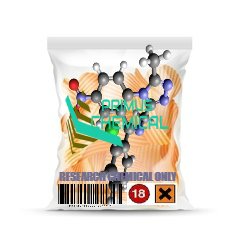BUY ONLINE DIPHENIDINE ONLINE
$110.00 – $3,080.00
BUY ONLINE DIPHENIDINE
Buy Online Diphenidine Online (1-(1,2-diphenylethyl)piperidine) is a dissociative NMDA receptor antagonist and anesthetic of the diarylethylamine class that has been sold online as a research chemical.
Diphenidine with an IUPAC or systematic name of (1-(1,2-diphenylethyl)piperidine) is a chemical compound that is similar in action to a NMDA receptor channel blocker. The molecular formula for Diphenidine is C19H23N with an average mass of 265.392609 Da and a monoisotopic mass of 265.183044 Da.
Chemical and physical properties of Diphenidine include a heavy atom count of 23, topological polar surface area of 23.5, covalently bonded unit count of 1, feature 3D acceptor count of 1, 3D donor count of 1, feature cation count of 1, feature 3D ring count of 3, and effective rotor count of 4.2.
Diphenidine / DND / 1,2-DEP are the short names for name for 1-(1,2-Diphenylethyl)piperidine and is an in-vitro NMDA receptor antagonist. Other well known NMDA receptor antagonists include Ketamine, Methoxetamine and 4-MeO-PCP.
Due to the nature of its chemical structure, the activity of this molecule is comparable to these other NMDA antagonists but it’s chemical structure is new.
Researchers studying the compound will need to be equipped, as all good labs should be, with a good set of scales capable of weighing as low as 50-100mg of material accurately.
Diphenidine is also a reasonably close analogue of compounds such as Lefetamine and MT-45, but unlike those substances it is not known to have any affinity for the opioid receptors.
As with all the chemicals that we stock, Diphenidine is not approved for any type of in-vivo research (i.e. not in humans or animals) or for clinical trials and therefore if accidently ingested then immediate medical attention should be sought. Please ensure you adhere to standard laboratory safety practices including using suitable skin, eye and clothing protection.
Diphenidine is a dissociative anesthetic that has been sold as a designer drug. The synthesis of diphenidine was first reported in 1924, and employed a Bruylants reaction analogous to the one that would later be used to discover phencyclidine in 1956.
| SELECT QUANTITY | 5 Grams, 10 Grams, 25 Grams, 50 Grams, 100 Grams, 250 Grams, 500 Grams, 1000 Grams |
|---|
Related products
RESEARCH CHEMICALS
RESEARCH CHEMICALS
RESEARCH CHEMICALS
RESEARCH CHEMICALS
RESEARCH CHEMICALS
RESEARCH CHEMICALS
RESEARCH CHEMICALS
CANNABINOIDS










